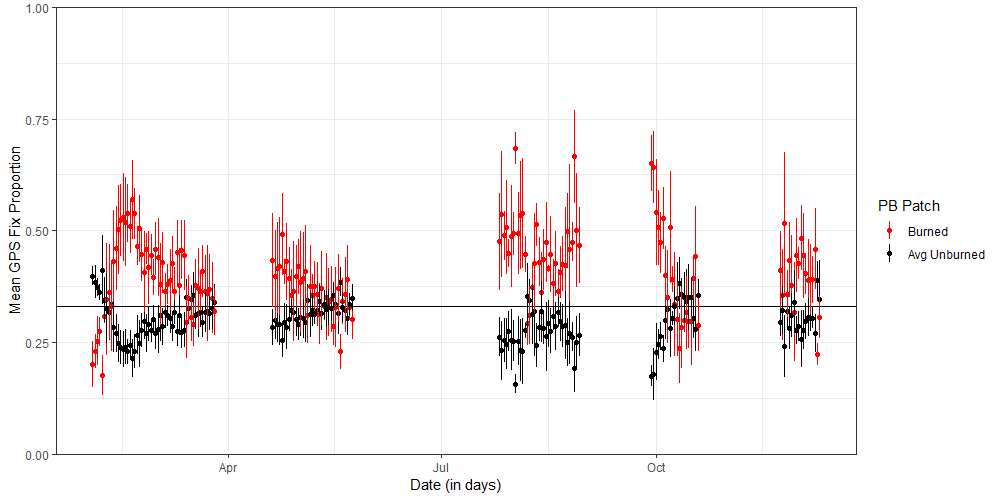by Britt Smith, Postdoctoral Research Associate working jointly with Archbold Biological Station and the UF/IFAS Range Cattle REC
on the USDA Long Term Agroecosystem Research (LTAR) Project
Fire is a historic and important disturbance in Florida’s ecosystems. Fire consumes dead and living organic plant matter and with ample soil moisture, plants will quickly regrow resulting in lush and nutritious vegetation for livestock and wildlife. In rangeland systems, fire can be used to reduce the abundance of woody plants, improve forage quality, and influence grazing animal distribution. Improving grazing animal distribution can help reduce local degradation and improve overall pasture utilization. We can use fire in the pasture to create patches of attractive forage which draw cattle away from unburned, degraded, or highly used areas.
In our study we used small, quarter-sized GPS data loggers to track cattle use in pastures over the course of a year. Using the distance between known cattle locations, we can estimate behavior into three categories: resting, grazing, and traveling. Cattle were rotated every 4-8 weeks between pastures treated with patch burns (1/3 of the pasture) and pastures fully burned. For our study, we are interested in cattle grazing use in relation to burned patches within the pasture. We specifically examined cattle grazing intensity and evenness in relation to these burned patches. We found that in Florida rangeland, cattle graze in recently burned areas more than unburned areas throughout the year. This surprised us, as we thought the attraction to the burned areas would only last a few weeks. Even with the rotational aspect of management, throughout the year, when cattle returned to pastures managed with patch burns they preferentially selected the burned area (see figure). We found suggestive evidence that cattle grazing was more even in burned areas, though our evidence was not conclusive.

***
Britt presented this topic for the Ona Highlight on March 12, 2019. To view a PDF of his presentation or the video recording of the webinar, visit our website’s virtual classroom by clicking here.
Comment or join our mail list: ona@ifas.ufl.edu
 0
0
